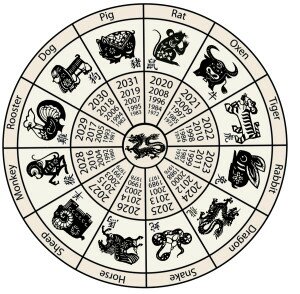Chinese New Year, Lunar New Year, or Spring Festival is the most important of the traditional Chinese holidays. It is commonly called “Lunar New Year”, because it is based on the lunisolar Chinese calendar. The festival traditionally begins on the first day of the first month (Chinese: 正月; pinyin: zhēng yuè) in the Chinese calendar and ends with Lantern Festival which is on the 15th day. Chinese New Year’s Eve is known as chú xī. It literally means “Year-pass Eve”.
Chinese New Year is the longest and most important festivity in the Chinese Lunar Calendar. The origin of Chinese New Year is itself centuries old and gains significance because of several myths and traditions. Ancient Chinese New Year is a reflection on how the people behaved and what they believed in the most.
Chinese New Year is celebrated in countries and territories with significant Han Chinese populations (Chinatowns), such as Mainland China,Hong Kong, Macau, Singapore, Taiwan, Indonesia, Laos, Malaysia, the Philippines, and Thailand. Chinese New Year is considered a major holiday for the Chinese and has had influence on the new year celebrations of its geographic neighbors, as well as cultures with whom the Chinese have had extensive interaction. These include Koreans (Seollal), Tibetans and Bhutanese (Losar), Mongolians (Tsagaan Sar),Vietnamese (Tết), and the Japanese before 1873 (Oshogatsu).
(Sited from http://en.wikipedia.org/wiki/Chinese_New_Year)
Asian Lunar Zodiac: What year are you?
Chinese Zodiac Origins — Why 12 Animals?
The 12 animals were chosen deliberately, after many revisions. The zodiac animals are either closely related to ancient Chinese people’s daily lives, or have lucky meanings.
The ox, horse, goat, rooster, pig, and dog are six of the main domestic animals raised by Chinese people. The other six animals: rat, tiger, rabbit, dragon, snake, and monkey are all loved by the Chinese people.
Why in That Order?
The 12 Chinese Zodiac animals are in a fixed order according to Chinese Yin and Yang Theory and perceived attributes.
The yin or the yang of the animals is defined based on the odd or even number of their claws (or toes, hoofs). The animals are then arranged in an alternating (complementary) yin-yang sequence.
Usually an animal has is the same number of claws on its front and rear legs. However the rat has four toes on its fore legs and five on its hind legs. As the old saying goes, “a thing is valued in proportion to its rarity”, so the Rat ranks first of the 12 zodiac animals. It uniquely combines the attributes of odd (yang) and even (yin). 4+5=9, and yang is dominant, so the Rat is classified as odd (yang) overall.
(sited from http://www.chinahighlights.com/travelguide/chinese-zodiac/)


Follow Us!